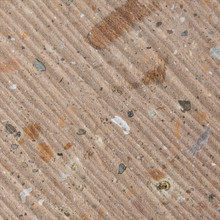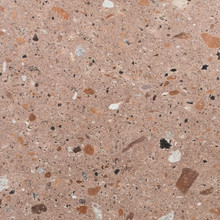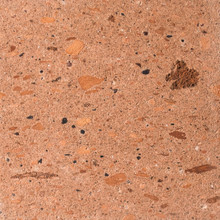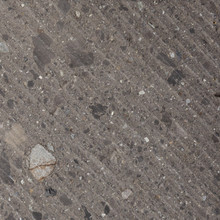Akin to a naturally formed terrazzo, Adoquin is a unique stone from Mexico formed from volcanic ash that has settled with local aggregate and then compressed over millions of years. The result is lightweight, durable, and dramatic. This prehistoric relic features a range of grey, brown, and orange earth tones in a physical manifestation of earth and time.














